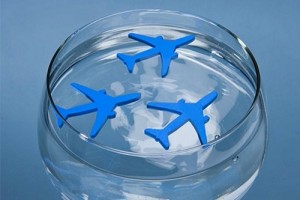 Freudenberg-NOK Sealing Technologies has introduced new materials that help aircraft manufacturers save weight and production costs while exceeding fire resistance and fireproof requirements for engine nacelles.
Freudenberg-NOK Sealing Technologies has introduced new materials that help aircraft manufacturers save weight and production costs while exceeding fire resistance and fireproof requirements for engine nacelles.
Seals in engine nacelles must withstand fire of more than 1,832° F (1,000°C) for 15 minutes per ISO 2685 and AC 20-135. Until now, special, fabric-reinforced materials have been used in these applications. Freudenberg-NOK’s new materials offer additional options.
Freudenberg-NOK is developing a material that will meet fireproof requirements in traditional fabric-reinforced constructions but offers up to a 20% weight savings over other existing elastomers. In addition Freudenberg-NOK has also developed a lower cost alternative material and construction for fire seals.
Engine fires, while rare in the modern aviation industry, are nonetheless dangerous occurrences. When an engine fire does occur, the fire must be contained within the nacelle to prevent fire and smoke from reaching the cabin of the aircraft and protect fuel carried in the wings.
Under federal safety guidelines, seals in engine nacelles must be able to withstand flame for 15 minutes and during this time, temperatures can climb as high as 2,000°F (nearly 1,100°C). To conserve fuel, modern engines have been employing increasingly high combustion chamber temperatures which expose seals to higher thermal stresses. For example, the inner side of the engine casing is exposed to temperatures of up to nearly 600° F (300°C) while the air flowing on the outside can be as low as -85° F ( -65°C).
“Freudenberg-NOK is continuously engaged in research on materials that offer the required temperature/fire resistance on one hand, and are as light as possible to maximize the payload on the other hand,” said Todd Blair, business and development manager at the Tillsonburg, Ontario facility where the components are developed and manufactured.
Engineers at the sealing specialist are testing a new silicone material that weighs 15 to 20% less than traditional Fire Resistant/Proof aviation elastomers.
“A similar material technology was previously developed by Freudenberg-NOK for non-fire applications and is currently in use on commercial aircraft providing customers tremendous weight savings,” Blair pointed out. “We are now taking this technology into fire applications by developing a lower density elastomer that can meet fireproof requirements when properly constructed with fabric reinforcement.”
When the surface of the silicone is exposed to direct flame contact, the surface takes on characteristics similar to ceramic material and becomes a fireproof barrier. This surface barrier slows the progress of elastomer degradation underneath. This material change enables the elastomer to withstand direct contact with fire much longer than traditional elastomers. Such that the seal construction can be simplified and the amount of expensive ceramic and aramid fabric layers can be reduced and potentially eliminated. This simplifies the manufacturing process and reduces costs.
In parallel with these advances, Freudenberg-NOK continues to provide its industry-proven fabric-reinforced silicone seals for aircraft customers and have come to rely upon these in existing aircraft. An average nacelle and thrust reverser ship set can contain over 100 custom parts that Freudenberg-NOK fully designs and validates for the application.
Specialists at Freudenberg-NOK in Tillsonburg work closely with engine manufacturers to achieve the best possible mix of materials and design for this special area of the aircraft. Design and collaboration with the customer’s interface is of crucial importance, since the seal’s geometry not only affects the air flow within the engine, but plays a key part in its ability to meet fire requirements as well. This is even more critical today, as industry authorities are converting from propane to Jet A burners for testing fireproof capabilities which can be much more challenging.
Freudenberg-NOK
Filed Under: Materials • advanced





Tell Us What You Think!